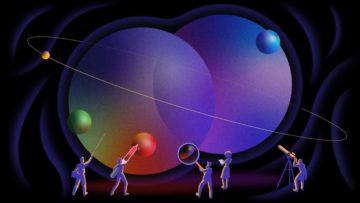Charlie Wood and Merrill Sherman in Quanta:
 High school physics teachers describe them as featureless balls with one unit each of positive electric charge — the perfect foils for the negatively charged electrons that buzz around them. College students learn that the ball is actually a bundle of three elementary particles called quarks. But decades of research have revealed a deeper truth, one that’s too bizarre to fully capture with words or images.
High school physics teachers describe them as featureless balls with one unit each of positive electric charge — the perfect foils for the negatively charged electrons that buzz around them. College students learn that the ball is actually a bundle of three elementary particles called quarks. But decades of research have revealed a deeper truth, one that’s too bizarre to fully capture with words or images.
“This is the most complicated thing that you could possibly imagine,” said Mike Williams, a physicist at the Massachusetts Institute of Technology. “In fact, you can’t even imagine how complicated it is.”
The proton is a quantum mechanical object that exists as a haze of probabilities until an experiment forces it to take a concrete form. And its forms differ drastically depending on how researchers set up their experiment. Connecting the particle’s many faces has been the work of generations.
More here.
